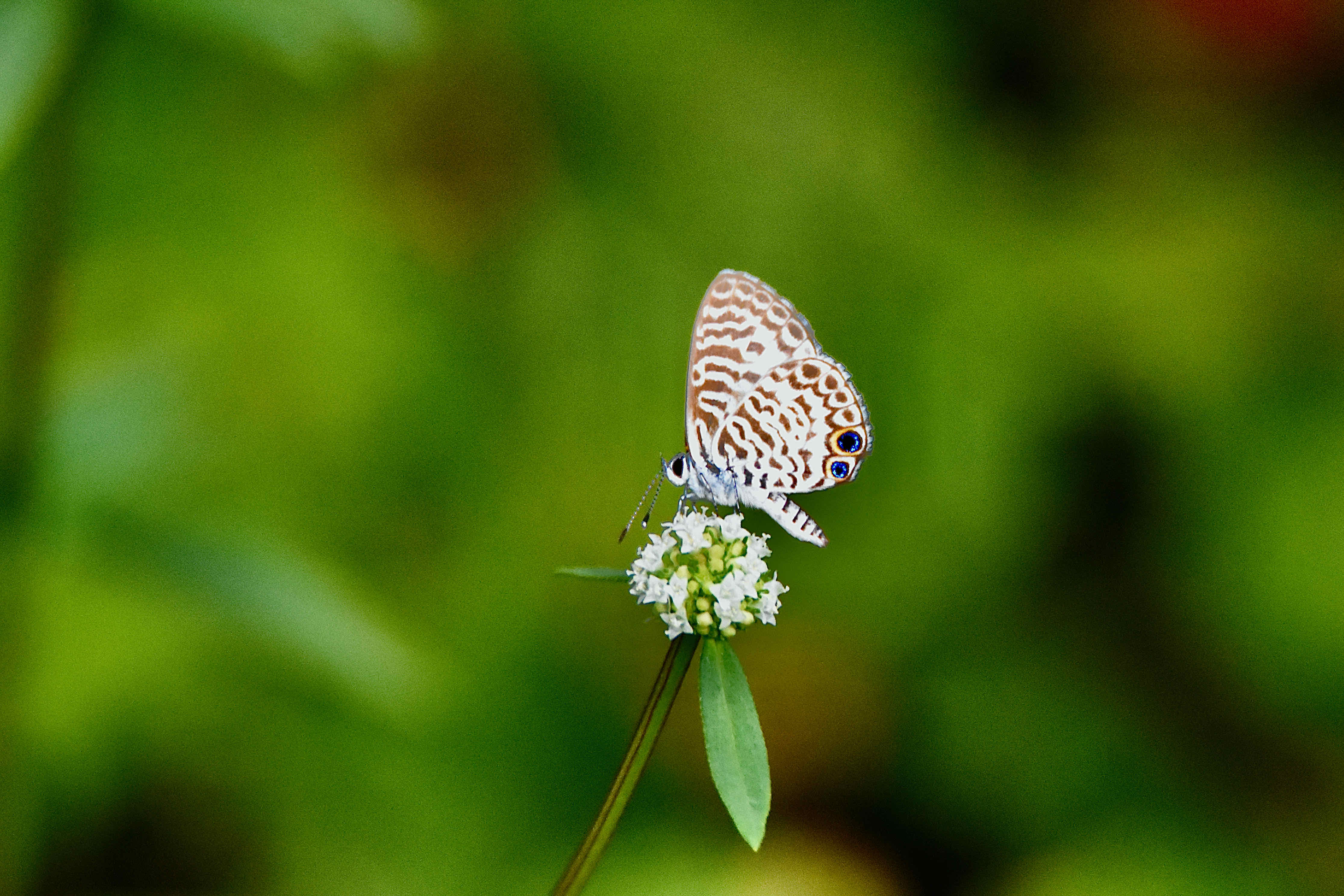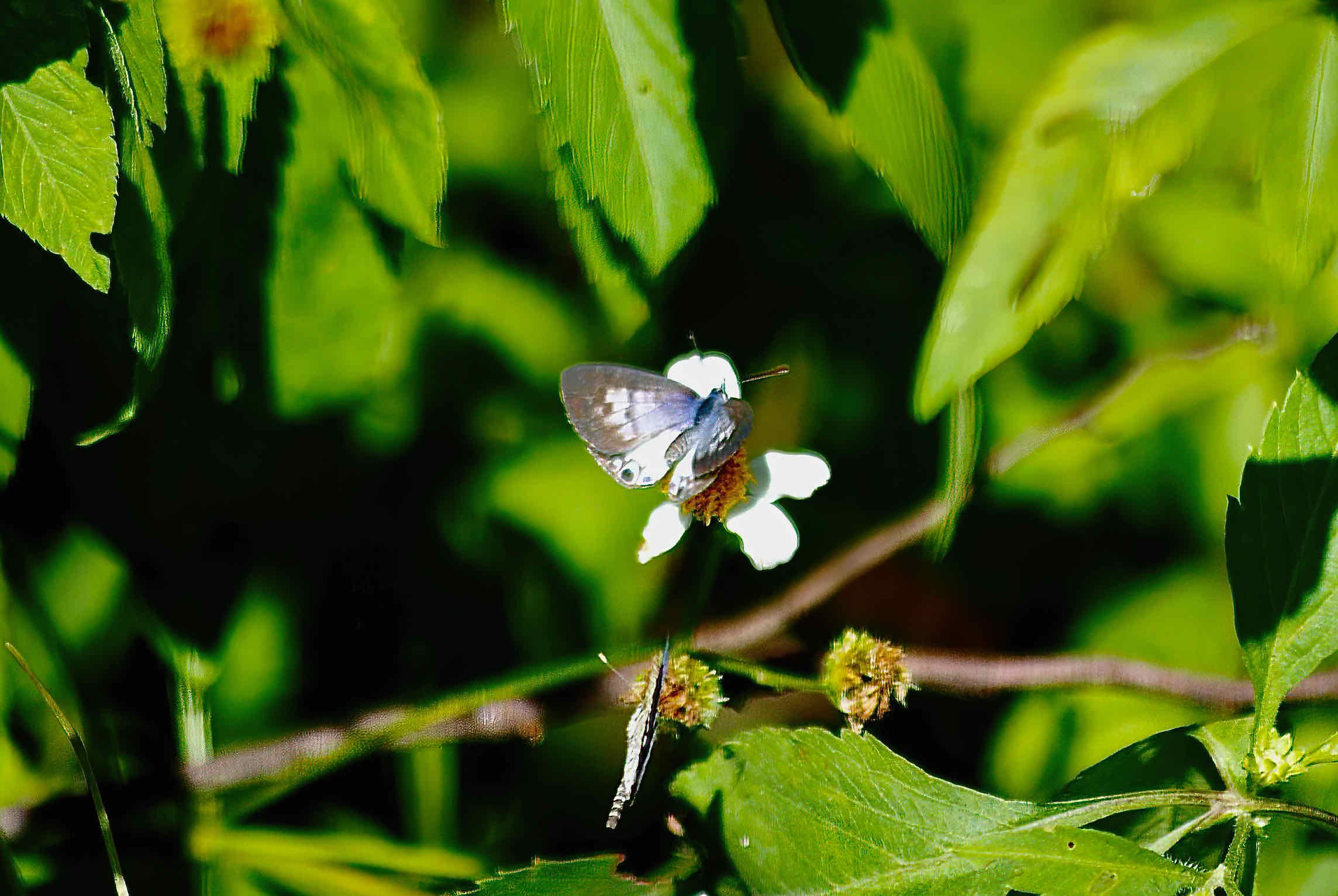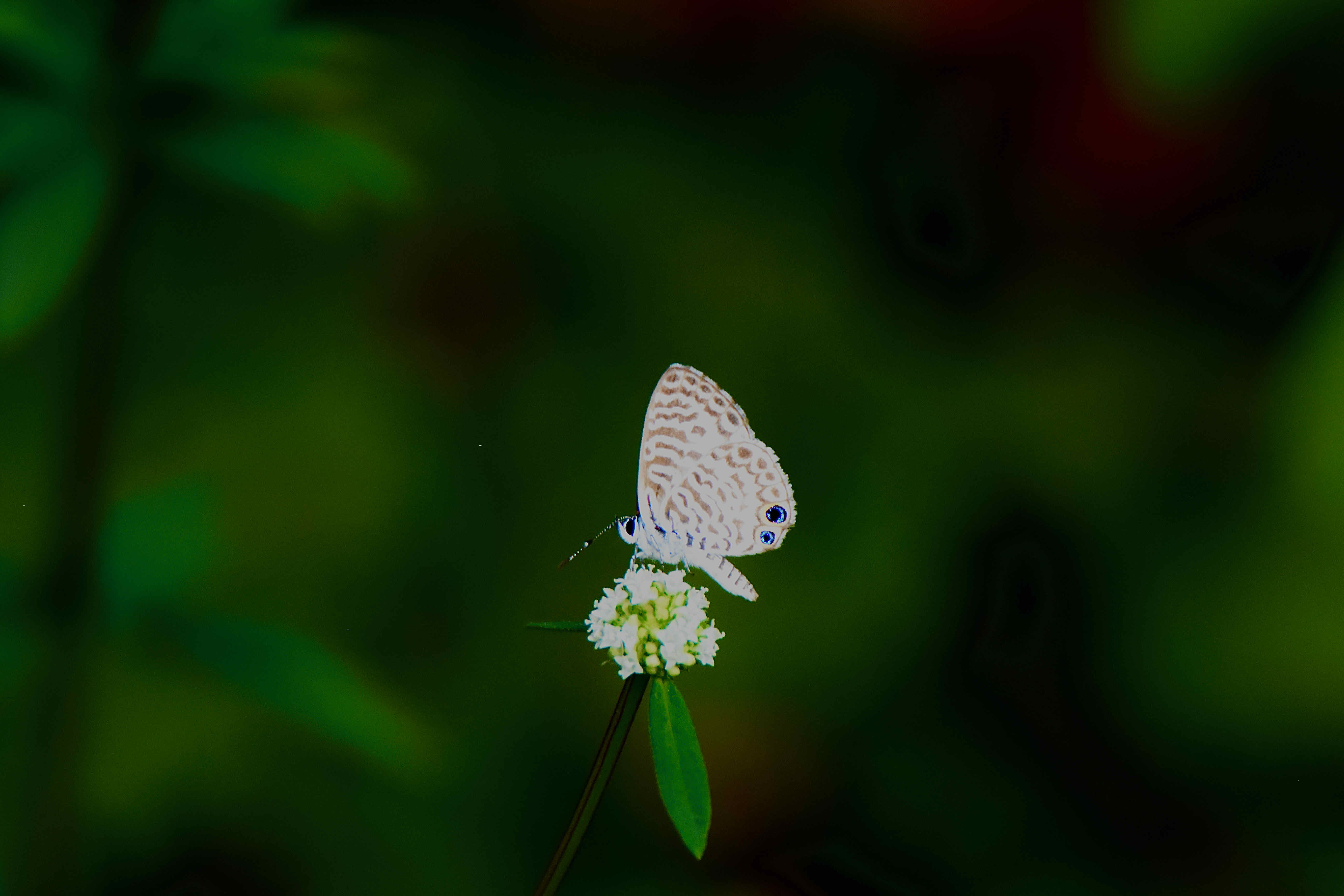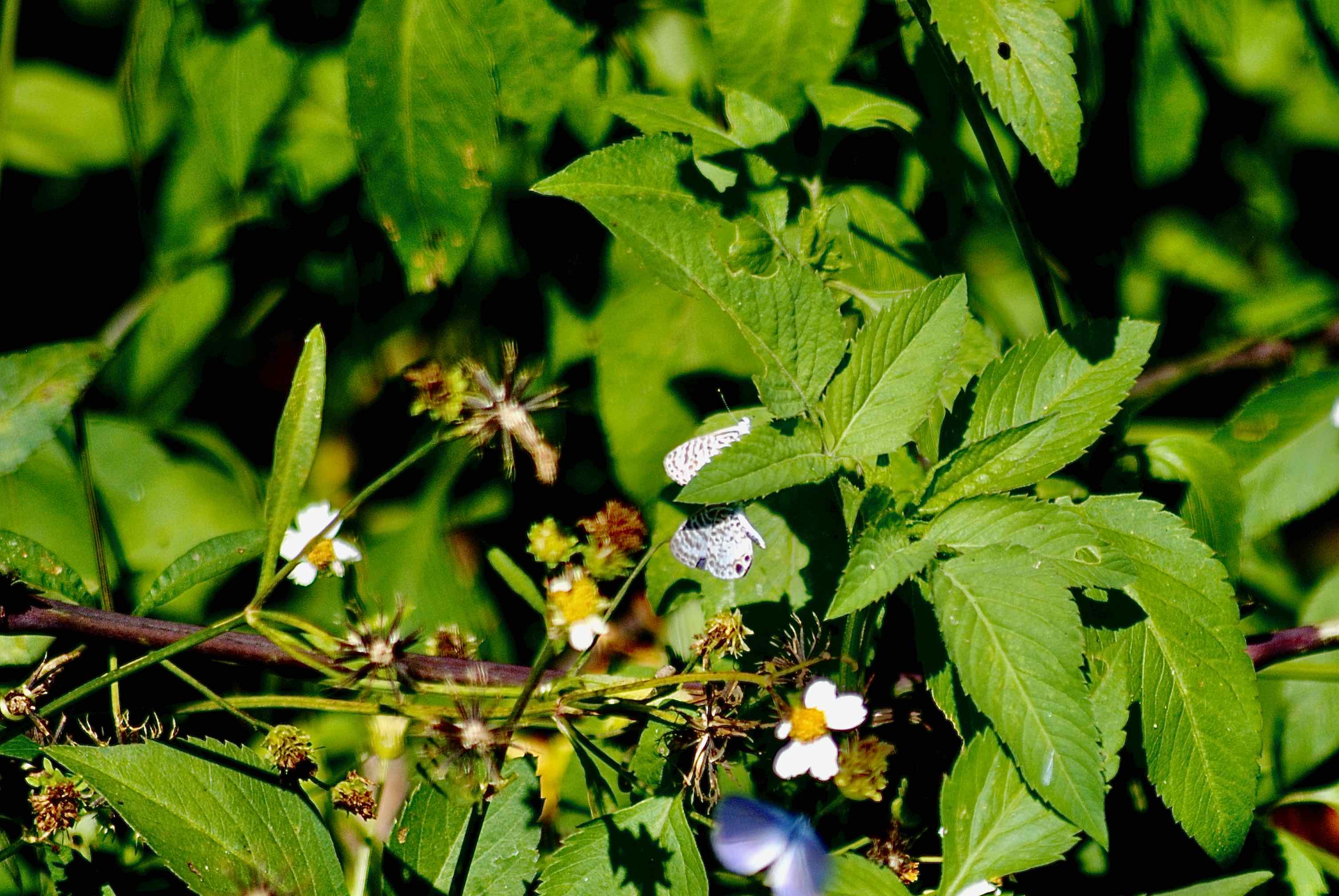
Cassius blue butterfly, photographed at Juno Dunes Natural Area Oceanfront Tract, Juno Beach, Palm Beach County, in September 2018.
We've heard of several species of plants that "bribe" ants into defending them. The cassius blue, Leptotes cassius, is an insect that does the same thing and in almost the same manner.
The plants were talking about are members of the pea family that have developed special glands called nectaries that produce a sugary secretion that attracts ants. The ants, in turn, help protect the plant against herbivore insects that would devour their sweet source.
Cassius blues, as caterpillars, have a "honey gland" that also secretes a sugary substance that attracts ants that feed off it and in turn protect the larvae against other bugs that might want to eat it. Out and out bribery, brilliantly conceived!
Cassius blues are common butterflies found throughout much of Florida's Peninsula, more so in the southern end of the state than the north. They are cold-sensitive and can't tolerate even the relatively mild winters of northern Florida. Cassius blues are particularly abundant in coastal areas.
They're also found in south Texas, but the geography that separates them has caused the Texans, known scientifically as striata, and Floridians, known as theonus, to develop as distinct subspecies. They're in flight, or active, year-round and produce as many as three generations during the course of a year.
It is a small butterfly, with a wingspan between three-quarters and an inch wide. Males can be pale to bright blue from above, while females tend to be lighter in color, more of a bluish-white, with dark borders on the forewings. Eggs are a pale green; caterpillars are green with a faint, white pattern on the body.
Hosts plants include milkpeas, leadwort (plumbago), keys blackbead, rosary pea and wild tamarind. Female cassius blues lay their eggs one at a time on the flower buds of their hosts. Newly hatched caterpillars eat the buds, flowers and developing seeds.
As we noted above, cassius blues do not tolerate cold at all, but occasionally, they do stray as far north as South Carolina and even Missouri. How they get there is unclear; some may be blown off course, others may hitch rides on ornamental plants transported out of state. Their range extends south into Mexico, the Caribbean, Central America and South America.
The cassius blue is similar in appearance to the ceraunus blue; an easy way to identify the cassius blue is the two large "eye spots" on the back of the wings. The ceraunus has only one eye spot on each.
Other names: tropical blue butterfly. It is a member of Lycaenidae, the family of gossamer-wing butterflies and the second-largest butterfly family in the world.
Juno Dunes Natural Area Oceanfront Tract



